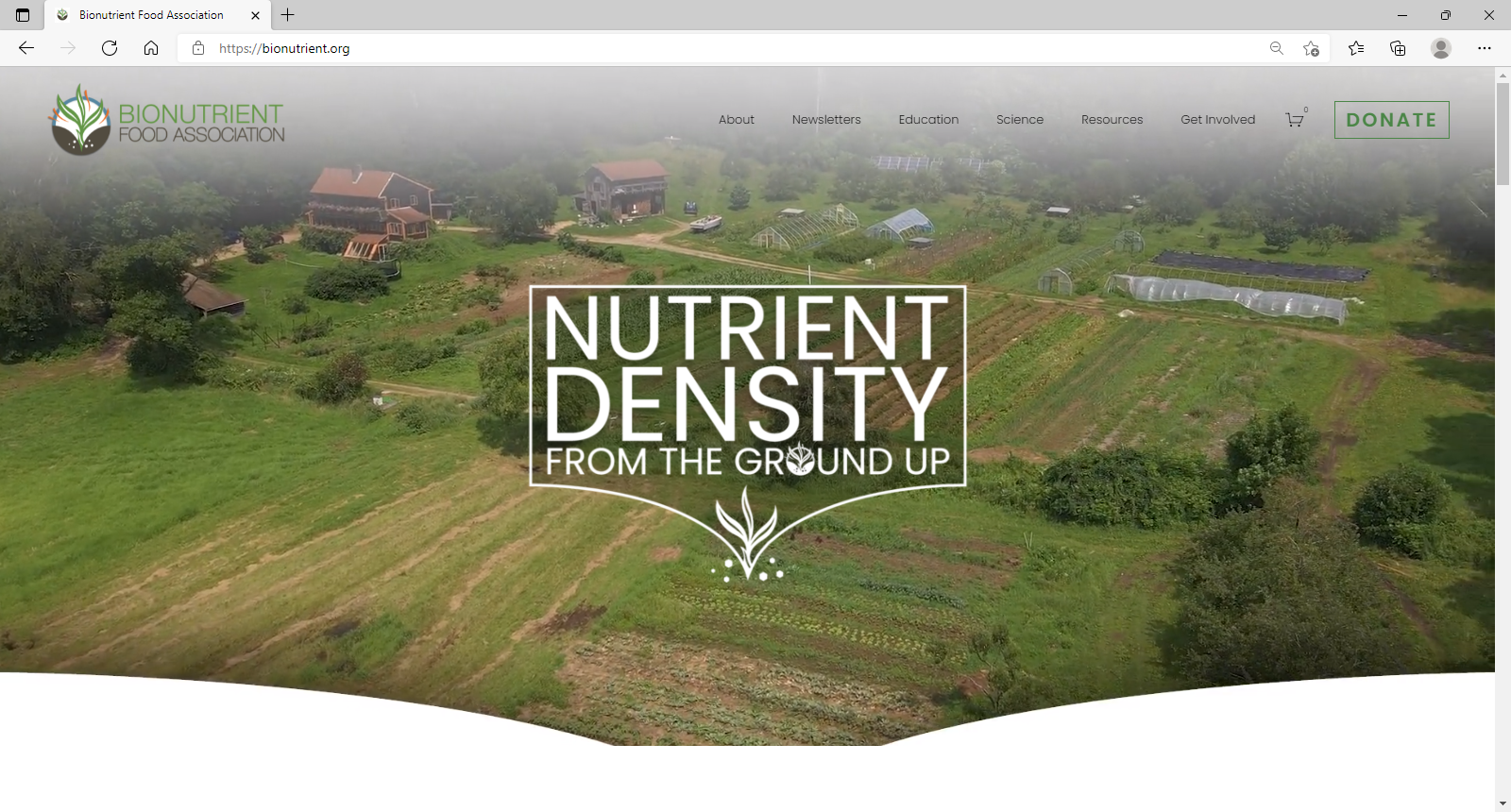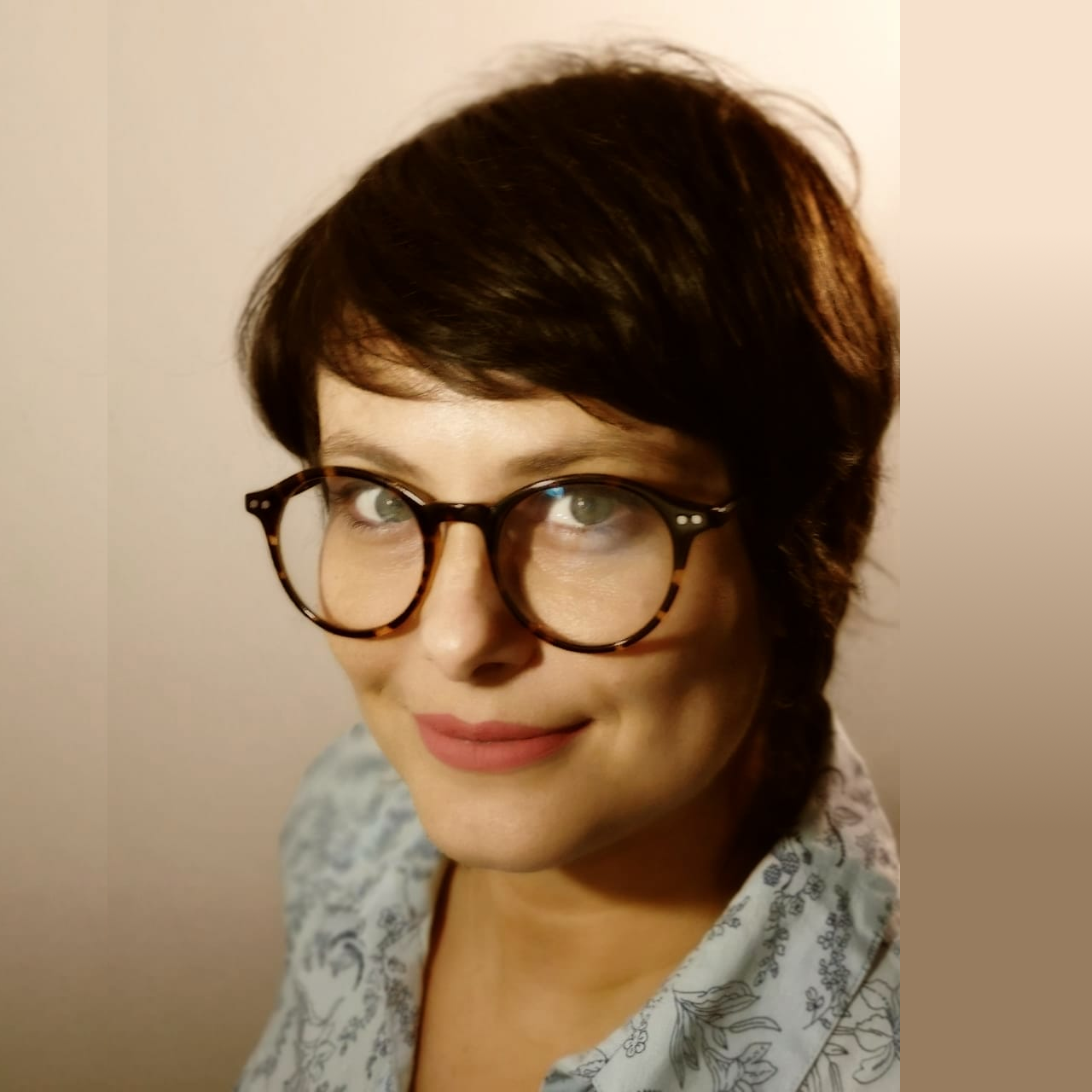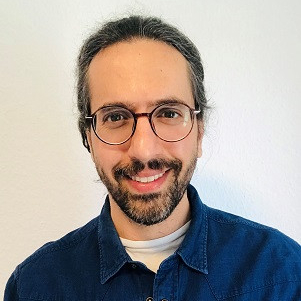“SurveyStack has now become this amazing, deeply thought Open Source framework for interoperable data. Through SurveyStack we are able to say with confidence ‘Yes, those quote unquote regenerative practices do connect with increased soil carbon as well as do connect with nutrient levels in food being increased’. And it is being understood by groups as disparate as the USDA and millions of smallholder growers in the global south to be a valuable framework. We are honored to have been at the leading edge of its development and to see all the other partners that are starting to use this SurveyStack framework,” says Dan Kittredge, Founder and Executive Director of the Bionutrient Food Association, a non-profit whose mission is to increase quality in the food supply.
2 August 2022: Join our next public online meetup with the SurveyStack developers of Our Sci
Dan Kittredge has been an organic farmer for more than 30 years. Dan grew up on Many Hands Organic Farm in central Massachusetts. After a global career in food and seed activism where he worked with farmers across India, Russia, and Central America. Dan returned to the U.S. and launched the Bionutrient Food Association (BFA) in 2010 to ignite a movement around food quality.
BFA’s significant growth since 2018 now means three Bionutrient Institute labs in the U.S. and one in Europe are conducting surveys of the food supply, measuring the variation of nutritional compounds found in food, and connecting it to agricultural management practices.
In 2021, the Bionutrient Institute unveiled a second-generation prototype of a handheld consumer spectrometer – initially developed by Our Sci LLC – and designed to test nutritional quality at the point of purchase, bringing transparency to the marketplace and providing growers with the needed tools to increase nutrition in their crops and leverage economic incentives to drive complete system regeneration.
Sebastian Klemm: What is the purpose of the Bionutrient Food Association, and how does it achieve this?
Dan Kittredge: The purpose of the Bionutrient Food Association is to increase quality in the food supply. By that we mean to create a reality where the ambient level of food next year is higher than it is this year for the whole planet, to increase quality in the food supply.
And we have been doing that through a number of means over the last 10 years. Initially, it was primarily educational courses, workshops and conferences. In the past five years we have been working on this broader project to bring nutrient density to the market as a market fact. The reality is that not all carrots are equal, not all tomatoes are equal. You know that with your tongue.
We think that through a couple of key steps we can shift the way food is grown, to create a dynamic where people are healthier and also the environment is healthier.
There is three basic steps in this process for the science side:
- One, is to identify that variation in food, so we can say this is the 20th percentile, this is the 80th percentile of a carrot.
- Two, is to connect those variations to causal factors, like What were the environmental conditions that connected to that 20th or that 80th percentile in the carrot and What were the varieties and What were the fertility programs. Thus, One is to identify the variation, and Two is to understand what causes it, so we can support growers from doing a better job.
- Three, is to build an instrument that anyone can use, a buyer, a wholesaler, a retailer or consumer. At that point of purchase you can literally go to the farmer’s market, pull the Bionutrient Meter out of your pocket, flash the light at the carrots, get a reading and see which ones you want to buy, which ones you don’t.
Our thought is that through empirical transparency and understanding of self-interest we can connect some very good levers to facilitate the kind of systemic change globally that a lot of us I think are looking for.
We have these apparently intransigent existential issues of climate and health and culture, and we think that through organizing around food being better, a lot of them can be systemically addressed.

Sebastian Klemm: How did Our Sci’s SurveyStack become an effective tool for the Bionutrient Food Association?
Dan Kittredge: SurveyStack is the best thing we have now. It is actually a real product and real service. We have been working with Our Sci since we helped to get established in 2017, when Greg Austic and Dan TerAvest were still working at Michigan State University. We got a donation for the building of the first generation of this instrument. That rapidly went through collaboration with Dorn Cox setting up openTEAM, and Michael Stenta setting up farmOS, and building the lab in Michigan at Our Sci and setting up the data collection process. Effectively, we needed a framework to do these things. We needed a structure to be able to connect the data between the agricultural management practices and the soil metrics and the food nutrients.
SurveyStack has now become this amazing, deeply thought Open Source framework for interoperable data. And it is being understood by groups as disparate as the USDA and millions of smallholder growers in the global south to be a valuable framework. We are honored to have been at the leading edge of its development and to see all the other partners that are starting to use this SurveyStack framework.
Sebastian Klemm: Why is SurveyStack exciting?
Dan Kittredge: As I understand it, and I am a farmer – so take what I say with the grain of salt – SurveyStack is part of a data stack that is designed in a very important way to facilitate interoperability across numerous frameworks and to guarantee control of data to the person who entered it.
Indeed, SurveyStack is the key piece of a very intelligently thought through and designed and now implemented structure.
SurveyStack allows for sharing and horizontal learning – without control – with trust on all scales and on all kinds of operations. SurveyStack is profoundly well designed, and being part of a data stack – farmOS sits below and spits out through APIs to various other frameworks – and complemented by the “Digital Coffee Shop” that is coming soon.
The Digital Coffee Shop or Farmer Coffee Shop is an open source benchmarking system built on top of OpenTEAM tools like Hylo, SurveyStack, and FarmOS. It provides farms a very low-effort way to compare their field management (i.e. how they plant / manage / harvest a crop) to the field management of others.
This Digital Coffee Shop is structured around how people share information now – farmers sharing how they grow X in a real coffee shop – but expands that discussion to include easy and efficient access to data to not only understand where they stand relative to others (benchmarking) but to within seconds get to why they stand there (the correlating differences or maybe causal differences) and then finally return to a real conversation to follow up with the how. For example:
- I see that I am 30th percentil and John is 90th percentil in soil health.
- I click on John’s planting and see that he is actually in a similar climate and soil type, but he plants earlier and uses a different fertilizer and tills to less depth.
- I now go to our group discussion in Hylo, screenshot what I am seeing, and ask John ‘Hey, I’m seeing you plant earlier and use this fertilizer, it seems to be making a difference… Here’s my planting style… Do you think this could work for me?‘
Sebastian Klemm: How does the way you are using SurveyStack support your goals at the Bionutrient Food Association?
Dan Kittredge: It provides growers with the ability to see what is and is not in their crops, and what is and is not in other people’s crops, as well as what the causal factors were on their farm and what they were on other farms.
Growers can actually see ‘Oh, this variety generally does bad across the board’ and ‘Oh, this fertility program looks like it really should work for me’. I can do it differently, so it provides that horizontal capacity for sharing and learning. Its inherent design is an outcome of that.
We can connect agricultural management practices with soil carbon with nutrient variation.
Through SurveyStack we are able to say with confidence now ‘Yes, those quote unquote regenerative practices do connect with increased soil carbon as well as do connect with nutrient levels in food being increased.’
Sebastian Klemm: If you think back spreadsheets, forms, complexity, non-scalable, values not aligned: How did you conduct similar work before there was SurveyStack?
Dan Kittredge: We went to the USDA and said we think there is a connection between soil health, plant health and human health. And they said: So do we, but it’s too complicated, you can’t figure it out. And we said: Watch us!
We understood we needed this kind of a structure to accomplish our objective, and it did not exist, so we went about making it!
A lot of the deeper questions we were not able to answer before. Now, we can, through the Survey Stack framework that goes forward to the Bionutrient Meter and the readings and how you get your reading back. That all happens through Survey Stack and at the Bionutrient Food Association, looking into the immediate future.
To request a SurveyStack demo walkthrough reach out to Emily Brady at Our Sci



Sebastian Klemm: How did the collaboration between the Bionutrient Food Association and Our Sci inform the SurveyStack solution? How has Bionutrient Food Association co-created SurveyStack and other tools in the OpenTEAM ecosystem?
Dan Kittredge: We had been talking about this concept of a handheld spectrometer for years as a market driver to facilitate a whole number of systemic benefits. We were talking about this actively publicly by 2012, if not before. By 2016 it looked like we had enough internal capacity as an organization and tech was at a place where it was plausible. So we set about the project and we looked around for allies. We were an educational farming organization, well-versed in biological systems, but not techies. Yet, we needed a hardware solution, we needed a software solution, we needed a lab solution.
We then started reaching out to networks and rapidly found Dorn Cox and Greg Austic and Michael Stenta. Dorn at the time was working with Michael with farmOS and also as part of Farm Hack, but there was no openTEAM yet. We then spent time talking about strategy and put together a plan. That was five years ago.
Out of that, as we began to raise money, we were able to provide the first contract that gave Greg the ability to stop working at Michigan State. Then Greg Austic and Dan TerAvest set up Our Sci, and we gave some of the first money to farmOS. Before openTEAM was established we started GOAT and funded the first GOAT hack, which was basically the Gathering for Open Ag Tech, out of which openTEAM coalesced.
Now, they have these entities which are very successful and doing very meaningful things. SurveyStack is the fourth iteration of a deep vision, it’s not coming out of thin air. It has been a process that a number of people are working on for a number of years.
Strategically speaking from the Bionutrient Food Association’s perspective, we have had this idea that nutrient density could be a driver to shift a lot of things. And to accomplish it – and accomplish it well – we realized we needed a number of other pieces of the puzzle. That was five years ago, when we started collaborating with these amazing people.
Sebastian Klemm : What are the next challenges that you aspire to tackle with the Bionutrient Food Association?
Dan Kittredge: We feel like we have accomplished our proven concept in our first three objectives 1) Can we identify variation? – Yes! 2) Can we connect with the agricultural management? – Yes! 3) Can we calibrate a consumer priced handheld open source spectrometer to it? – Yes! We can do all those things.
Now, we actually have to define nutrient density! Thus far, we have looked at nutrient variation. We have said zinc varies in carrots eight to one, copper in berries and spinach three to one, iron varies in spinach 15 into one. We can see those variations on a number of elements and some compounds, but that is different than saying this carrot is in the 80th percentile, this carrot in the 20 percentile.
Everything we have done has been on charitable donations. We are not a company. We do not have any IP. Everything is in the commons, everything is open source, the engineering for the spectrometer, the data, the app, it is all open! It has been an issue having sufficient resources to be able to get that level of a scientific answer – this steakake is better than that steakake – but that is where we are at now.
We are at the point of being able to do those deeper assessments and go beyond nutrient variations and documenting them and calibrating them, to true nutrient density! We will continue to use this data framework! Now that we have got it, we can plug hundreds of compounds from a sample into this structure instead of 20. It will just deepen this understanding and awareness.
We have a proven concept on our strategy, and we hope that five years from today, we have defined quality in food across the planet, and the markets are working to support those outcomes of it being better in the land.

2 August 2022: Join our next public online meetup with the SurveyStack developers of Our Sci
Discover the Bionutrient Institute & the Bionutrient Food Association
Discover Our Sci
Discover the Survey Stack App
Reach out to Emily Brady at Our Sci to request a SurveyStack demo walkthrough
Reach out to Adie Pregenzer at Our Sci if interested in the Digital Coffee Shop






